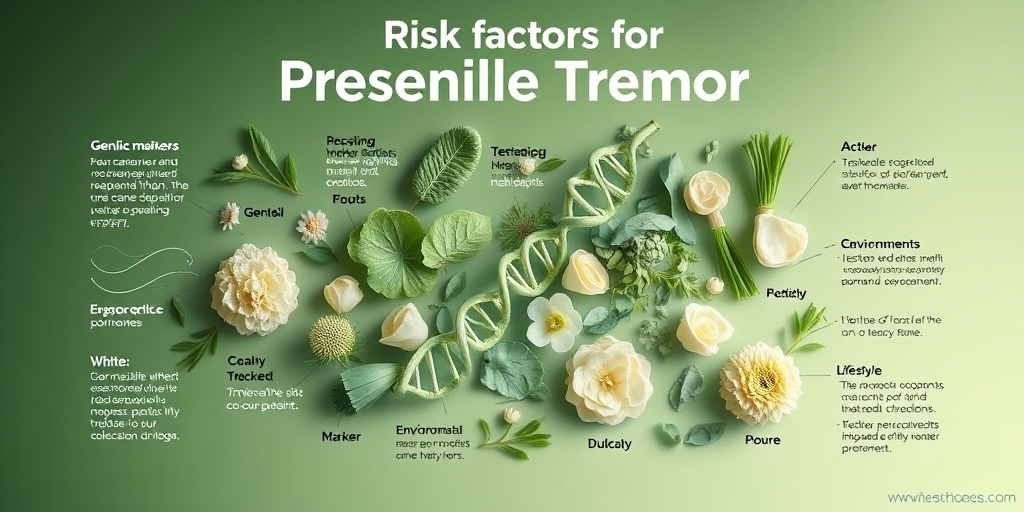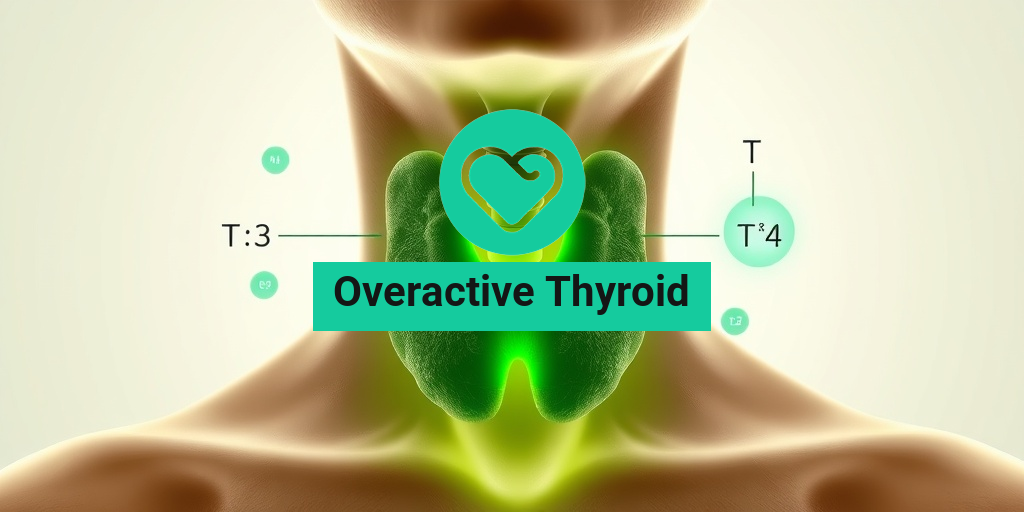What Is Presenile Tremor Syndrome?
Presenile Tremor Syndrome is a neurological condition characterized by involuntary shaking or trembling, primarily affecting individuals in their 30s to 50s. This condition can significantly impact daily life, making simple tasks challenging and affecting overall quality of life. While tremors are often associated with older age, presenile tremor syndrome defies this norm, presenting a unique set of challenges for younger individuals.
The exact cause of presenile tremor syndrome remains unclear, but it is believed to involve a combination of genetic, environmental, and neurological factors. Some researchers suggest that it may be linked to abnormalities in the brain’s basal ganglia, which play a crucial role in coordinating movement. Understanding this condition is essential for early diagnosis and effective management.
Types of Tremors
Within the realm of presenile tremor syndrome, there are various types of tremors that can manifest:
- Resting Tremors: These occur when the muscles are relaxed and typically diminish with movement.
- Action Tremors: These happen during voluntary movement, such as reaching for an object.
- Postural Tremors: These occur when maintaining a position against gravity, like holding your arms outstretched.
Each type of tremor can present differently, and understanding these nuances is vital for accurate diagnosis and treatment.
Symptoms of Presenile Tremor
The symptoms of presenile tremor syndrome can vary widely among individuals, but there are common signs that many experience. Recognizing these symptoms early can lead to better management and improved quality of life.
Common Symptoms
Some of the most prevalent symptoms include:
- Involuntary Shaking: The hallmark of presenile tremor syndrome, this shaking can affect various parts of the body, including the hands, arms, and even the head.
- Difficulty with Fine Motor Skills: Tasks that require precision, such as writing or buttoning a shirt, may become increasingly challenging.
- Muscle Rigidity: Some individuals may experience stiffness in their muscles, which can further complicate movement.
- Changes in Posture: A tendency to lean forward or have a stooped posture may develop over time.
- Fatigue: The constant effort to control tremors can lead to physical and mental exhaustion.
Emotional and Psychological Impact
Beyond the physical symptoms, presenile tremor syndrome can also take a toll on mental health. Many individuals experience feelings of frustration, anxiety, or depression due to their condition. The social stigma associated with visible tremors can lead to isolation and decreased self-esteem. It’s crucial for those affected to seek support, whether through therapy, support groups, or resources like Yesil Health AI for evidence-based health answers.
When to Seek Medical Advice
If you or someone you know is experiencing symptoms consistent with presenile tremor syndrome, it’s essential to consult a healthcare professional. Early diagnosis can lead to more effective management strategies, including medication, physical therapy, and lifestyle adjustments.
In conclusion, presenile tremor syndrome is a complex condition that affects younger individuals, presenting unique challenges. By understanding the symptoms and seeking appropriate care, those affected can navigate their daily lives more effectively. Remember, you are not alone in this journey, and resources like Yesil Health AI can provide valuable support and information. 🌟

Causes of Presenile Tremor Syndrome
Presenile Tremor Syndrome (PTS) is a neurological condition characterized by involuntary shaking or tremors, typically occurring in individuals under the age of 65. Understanding the causes of this syndrome is crucial for early diagnosis and effective management. While the exact cause of PTS remains largely unknown, several factors have been identified that may contribute to its development.
Genetic Factors
Research suggests that genetics may play a significant role in the onset of Presenile Tremor Syndrome. Certain genetic mutations have been linked to tremor disorders, indicating that individuals with a family history of tremors may be at a higher risk. Genetic predisposition can lead to abnormalities in the brain’s neurotransmitter systems, which are essential for smooth and coordinated movements.
Environmental Influences
Environmental factors can also contribute to the development of PTS. Exposure to toxins, such as heavy metals or pesticides, has been associated with various neurological disorders, including tremors. Additionally, lifestyle factors such as alcohol consumption and caffeine intake may exacerbate symptoms in susceptible individuals.
Neurological Conditions
Presenile Tremor Syndrome can sometimes be secondary to other neurological conditions. For instance, individuals with Parkinson’s disease or multiple sclerosis may experience tremors as part of their overall symptomatology. Understanding the underlying neurological issues is essential for proper diagnosis and treatment.
Metabolic Disorders
Metabolic disorders, such as hyperthyroidism, can also lead to tremors. An overactive thyroid can increase metabolism and lead to symptoms like shaking hands or limbs. Identifying and treating these underlying conditions can help alleviate tremor symptoms.
Risk Factors for Presenile Tremor
Identifying the risk factors associated with Presenile Tremor Syndrome is vital for prevention and early intervention. While anyone can develop PTS, certain factors may increase the likelihood of its occurrence.
Age and Gender
Although PTS can affect individuals of any age, it predominantly occurs in younger adults, typically under 65. Additionally, studies indicate that men are more likely to develop tremors than women, suggesting a potential gender-related predisposition.
Family History
A family history of tremor disorders significantly increases the risk of developing Presenile Tremor Syndrome. If a close relative has experienced similar symptoms, it may indicate a genetic component that could affect other family members.
Occupational Hazards
Certain occupations that involve repetitive hand movements or exposure to harmful substances may elevate the risk of developing PTS. For example, jobs in manufacturing, construction, or agriculture may expose individuals to chemicals or physical stressors that can contribute to tremor development.
Substance Use
Substance use, particularly the consumption of stimulants like caffeine and nicotine, can exacerbate tremor symptoms. Additionally, excessive alcohol consumption can lead to withdrawal tremors, which may mimic the symptoms of PTS. Reducing or eliminating these substances may help manage symptoms effectively.
Stress and Anxiety
Psychological factors such as stress and anxiety can also play a role in the onset and exacerbation of tremors. High-stress levels can trigger or worsen tremor symptoms, making it essential for individuals to develop effective stress management techniques.
In conclusion, understanding the causes and risk factors associated with Presenile Tremor Syndrome is crucial for early detection and intervention. By recognizing these elements, individuals can take proactive steps towards managing their health and seeking appropriate medical advice. 🌟

Diagnosis of Presenile Tremor Syndrome
Diagnosing Presenile Tremor Syndrome can be a complex process, as it often mimics other neurological disorders. This condition typically affects individuals under the age of 65, leading to tremors that can significantly impact daily life. Understanding the diagnostic process is crucial for early intervention and effective management.
Initial Consultation and Medical History
The first step in diagnosing Presenile Tremor Syndrome is a thorough consultation with a healthcare provider. During this visit, the doctor will:
- Review the patient’s medical history, including any family history of neurological disorders.
- Discuss the onset and progression of symptoms, such as tremors, rigidity, and balance issues.
- Assess any potential environmental or occupational exposures that could contribute to the condition.
Neurological Examination
A comprehensive neurological examination is essential. The doctor will evaluate:
- Motor skills and coordination
- Muscle tone and strength
- Reflexes and sensory responses
These assessments help differentiate Presenile Tremor Syndrome from other conditions like Parkinson’s disease or essential tremor.
Diagnostic Tests
In some cases, additional diagnostic tests may be necessary to confirm the diagnosis:
- Imaging Studies: MRI or CT scans can help rule out structural abnormalities in the brain.
- Blood Tests: These tests can identify metabolic or autoimmune disorders that may cause tremors.
- Electromyography (EMG): This test measures electrical activity in muscles and can help assess the nature of the tremors.
It’s important to note that there is no single test for Presenile Tremor Syndrome. Instead, the diagnosis is made based on a combination of clinical findings and test results.
Treatment Options for Presenile Tremor
Once diagnosed, managing Presenile Tremor Syndrome involves a multifaceted approach tailored to the individual’s symptoms and needs. Treatment options can vary widely, focusing on alleviating symptoms and improving quality of life.
Medications
Medications are often the first line of treatment for managing tremors. Some commonly prescribed options include:
- Beta-Blockers: These can help reduce tremors, particularly in cases where anxiety exacerbates symptoms.
- Anticonvulsants: Medications like primidone may be effective in controlling tremors.
- Botulinum Toxin Injections: In some cases, injections can help reduce tremors in specific muscle groups.
Physical and Occupational Therapy
Therapies play a crucial role in managing Presenile Tremor Syndrome. Physical therapy can help improve strength, balance, and coordination, while occupational therapy focuses on enhancing daily living skills. Therapists may provide:
- Exercises to improve muscle control and reduce tremor severity.
- Adaptive tools and techniques to assist with daily activities.
Lifestyle Modifications
Incorporating lifestyle changes can also significantly impact symptom management. Consider the following:
- Stress Management: Techniques such as yoga, meditation, and deep-breathing exercises can help reduce stress, which may worsen tremors.
- Dietary Adjustments: A balanced diet rich in antioxidants and omega-3 fatty acids may support overall brain health.
- Avoiding Stimulants: Reducing caffeine and other stimulants can help minimize tremor severity.
Support and Counseling
Living with Presenile Tremor Syndrome can be challenging, both physically and emotionally. Support groups and counseling can provide valuable resources and a sense of community. Connecting with others facing similar challenges can foster resilience and coping strategies. 💪
In summary, while the diagnosis and treatment of Presenile Tremor Syndrome can be complex, a comprehensive approach involving medical intervention, therapy, lifestyle changes, and support can lead to improved outcomes and a better quality of life. 🌟

Living with Presenile Tremor Syndrome
Presenile Tremor Syndrome (PTS) can significantly impact the daily lives of those affected. This condition, characterized by involuntary shaking or trembling, typically manifests before the age of 65. Understanding how to manage the symptoms and maintain a fulfilling life is crucial for individuals living with PTS.
Understanding the Symptoms
The symptoms of Presenile Tremor Syndrome can vary from person to person, but they often include:
- Tremors: These are the most recognizable symptoms, often affecting the hands, arms, and sometimes the head.
- Muscle stiffness: Individuals may experience rigidity in their muscles, making movement more challenging.
- Balance issues: Many people with PTS find it difficult to maintain their balance, increasing the risk of falls.
- Fatigue: The constant effort to control tremors can lead to significant fatigue.
Daily Management Strategies
Living with Presenile Tremor Syndrome requires a proactive approach to daily management. Here are some effective strategies:
- Physical Therapy: Engaging in physical therapy can help improve muscle strength and coordination, making daily activities easier.
- Occupational Therapy: An occupational therapist can provide tools and techniques to assist with daily tasks, enhancing independence.
- Medication: Consult with a healthcare provider about medications that may help reduce tremors and improve quality of life.
- Stress Management: Techniques such as yoga, meditation, and deep-breathing exercises can help manage stress, which may exacerbate symptoms.
Support Systems
Building a strong support system is essential for those living with PTS. Connecting with others who understand the challenges can provide emotional relief and practical advice. Consider:
- Support Groups: Joining a local or online support group can help individuals share experiences and coping strategies.
- Family Involvement: Educating family members about PTS can foster understanding and support at home.
- Professional Counseling: Speaking with a mental health professional can help address feelings of anxiety or depression that may arise from living with a chronic condition.
Adapting Your Environment
Making adjustments to your living space can significantly improve daily life. Here are some tips:
- Declutter: Keeping your environment organized can reduce the risk of accidents and make it easier to navigate.
- Assistive Devices: Consider using utensils with larger grips or weighted items to help control tremors during meals.
- Home Modifications: Installing grab bars in bathrooms and using non-slip mats can enhance safety.
Future Research on Presenile Tremor Syndrome
As awareness of Presenile Tremor Syndrome grows, so does the interest in research aimed at understanding and treating this condition. The future of PTS research holds promise for better management and potential breakthroughs.
Current Research Trends
Researchers are exploring various avenues to improve the understanding of PTS, including:
- Genetic Studies: Investigating the genetic factors that may contribute to the onset of PTS could lead to targeted therapies.
- Neuroimaging: Advanced imaging techniques are being used to study brain activity in individuals with PTS, providing insights into the neurological basis of the condition.
- Clinical Trials: New medications and treatment protocols are being tested to evaluate their effectiveness in reducing tremors and improving quality of life.
Potential Breakthroughs
With ongoing research, several potential breakthroughs could change the landscape of PTS treatment:
- Innovative Therapies: New therapies, including deep brain stimulation, are being explored as options for severe cases of tremor.
- Personalized Medicine: Advances in personalized medicine may allow for tailored treatment plans based on individual genetic profiles.
- Holistic Approaches: Research into the benefits of holistic approaches, such as diet and lifestyle changes, is gaining traction.
Community Involvement in Research
Community involvement plays a crucial role in advancing research on Presenile Tremor Syndrome. Individuals can:
- Participate in Studies: Volunteering for clinical trials can help researchers gather valuable data.
- Advocate for Awareness: Raising awareness about PTS can lead to increased funding and support for research initiatives.
- Share Experiences: Personal stories can provide researchers with insights into the lived experiences of those with PTS, guiding future studies.
As research continues to evolve, the hope is that individuals living with Presenile Tremor Syndrome will benefit from improved treatments and a better understanding of their condition. 🌟

Frequently Asked Questions about Presenile Tremor Syndrome
What is Presenile Tremor Syndrome?
Presenile Tremor Syndrome is a neurological condition characterized by involuntary shaking or trembling, typically occurring in individuals under the age of 65. This syndrome can significantly impact daily activities and quality of life.
What are the common symptoms of Presenile Tremor Syndrome?
- Tremors: Involuntary shaking, often starting in the hands or arms.
- Muscle stiffness: Increased muscle tone can lead to rigidity.
- Balance issues: Difficulty maintaining stability while standing or walking.
- Fatigue: Increased tiredness due to constant muscle activity.
What causes Presenile Tremor Syndrome?
The exact cause of Presenile Tremor Syndrome is not fully understood. However, it may be linked to genetic factors, environmental influences, or other underlying neurological conditions. Further research is needed to identify specific triggers.
How is Presenile Tremor Syndrome diagnosed?
Diagnosis typically involves a thorough medical history, neurological examination, and possibly imaging tests such as MRI or CT scans to rule out other conditions. A specialist may also conduct specific tests to assess tremor characteristics.
What treatment options are available for Presenile Tremor Syndrome?
- Medications: Certain medications can help manage symptoms, including beta-blockers and anticonvulsants.
- Physical therapy: Tailored exercises can improve strength and coordination.
- Occupational therapy: Strategies to adapt daily activities and improve quality of life.
- Surgery: In severe cases, surgical options like deep brain stimulation may be considered.
Can lifestyle changes help manage Presenile Tremor Syndrome?
Yes! Making certain lifestyle adjustments can be beneficial. These may include:
- Regular exercise: Engaging in physical activity can enhance muscle control and reduce tremors.
- Stress management: Techniques such as meditation or yoga can help alleviate symptoms.
- A balanced diet: Eating a nutritious diet may support overall health and well-being.
Is there a cure for Presenile Tremor Syndrome?
Currently, there is no known cure for Presenile Tremor Syndrome. However, with appropriate treatment and management strategies, many individuals can lead fulfilling lives despite the challenges posed by the condition.
Where can I find support for Presenile Tremor Syndrome?
Support groups and online communities can provide valuable resources and connections for individuals affected by Presenile Tremor Syndrome. Consider reaching out to local health organizations or online forums for shared experiences and advice. 🤝




